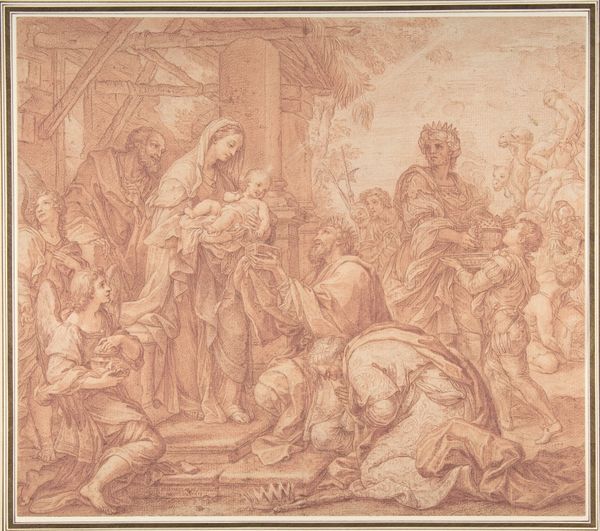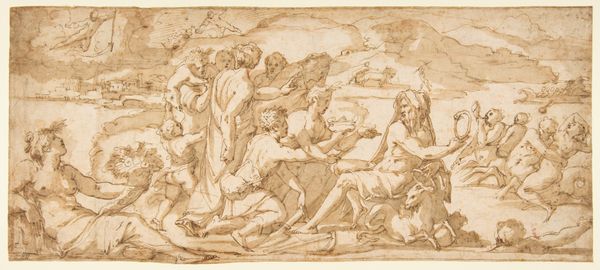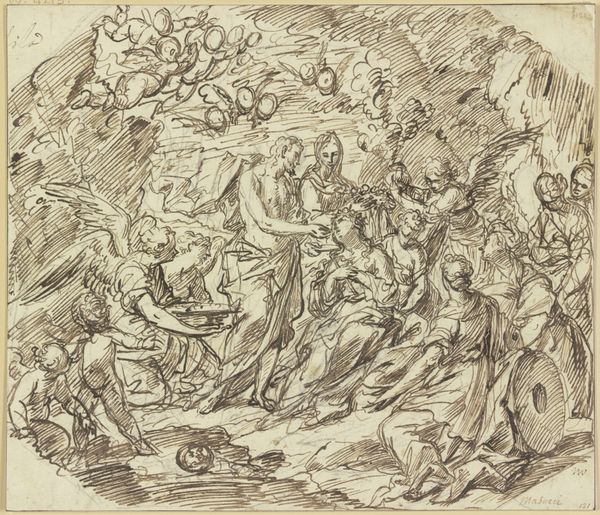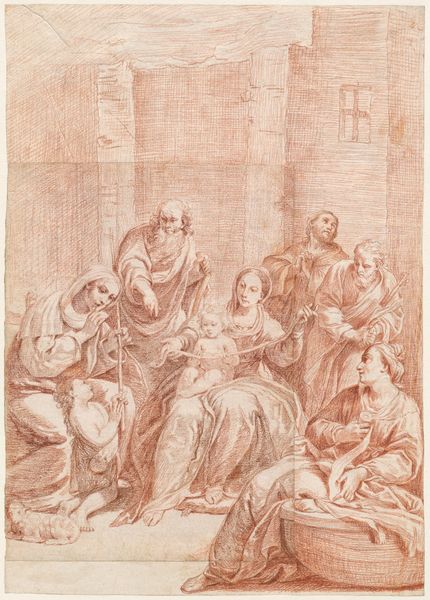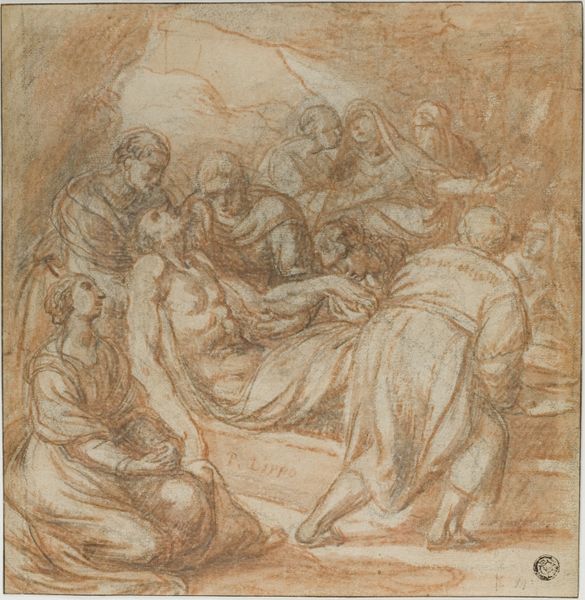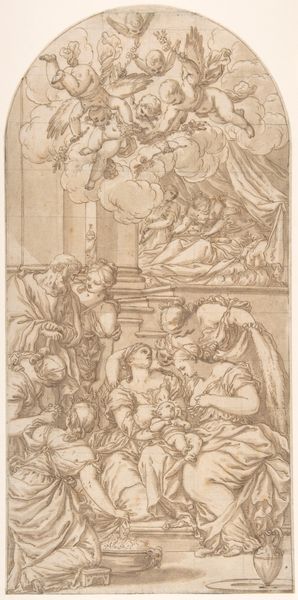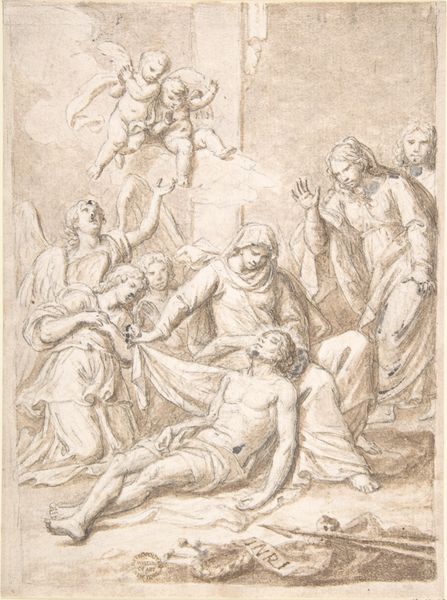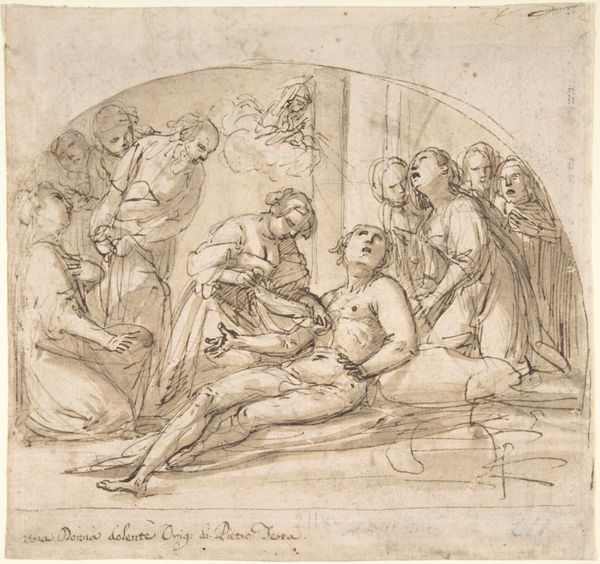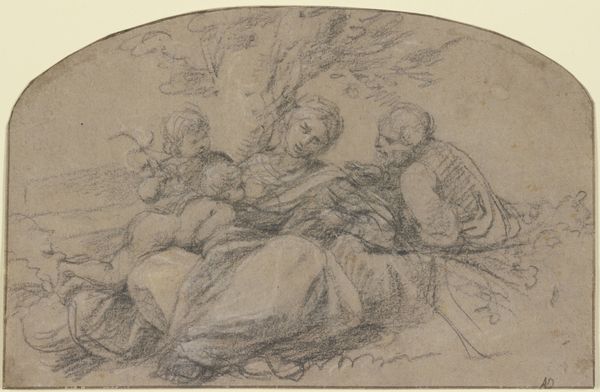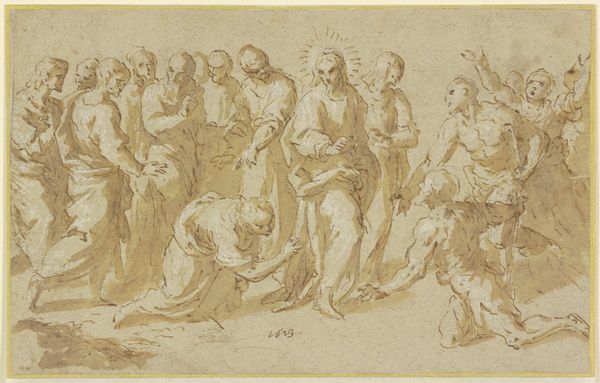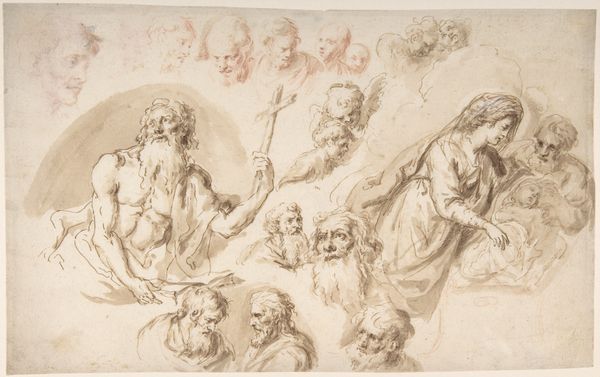
drawing, print, charcoal
#
drawing
#
narrative-art
# print
#
charcoal drawing
#
figuration
#
11_renaissance
#
charcoal
#
history-painting
Dimensions: 11 15/16 x 15 7/8 in. (30.3 x 40.3 cm)
Copyright: Public Domain
Editor: This is Johann Friedrich Overbeck’s “The Entombment,” created sometime between 1700 and 1800. It’s a charcoal drawing, and the reddish hues give it a very somber mood. What do you see in this piece beyond the initial feeling of sorrow? Curator: Beyond the obvious religious context and mournful scene, I see a potent commentary on the historical marginalization of grief, especially in the context of patriarchal structures. Notice how the women, ostensibly closest to the deceased, are relegated to postures of passive sorrow. What narrative does that visual choice reinforce, and whose voices are amplified, and conversely, suppressed? Editor: So, you’re saying the artist is intentionally highlighting a power dynamic? Curator: Precisely! The composition compels us to question not only the immediate loss, but also the enduring societal scripts that dictate how grief is performed, especially across gender lines. It encourages a dialogue about who is granted the authority to express loss, and whose experiences are often invisibilized within the grand narratives of history. How does this piece make you reflect on contemporary expressions of mourning? Editor: I suppose I hadn’t considered it that way before. It’s almost as though the artist is inviting us to consider the act of entombment as something beyond the purely physical. The people, even in their sadness, seem stuck in place, conforming to gender and societal expectations, burying emotions along with the body. Curator: Absolutely. Overbeck offers a window into how even deeply personal experiences like grief become enmeshed with power dynamics and cultural expectations, reminding us that history isn’t just about grand narratives, but about the silences and the suppressed stories woven within. What actions do you believe artists can take today to subvert power imbalances and make the silenced heard? Editor: That gives me a lot to think about. I appreciate you providing me with a completely new perspective on Overbeck's art. Thank you! Curator: My pleasure. Hopefully, it sparked new ways to perceive art beyond face value.
Comments
No comments
Be the first to comment and join the conversation on the ultimate creative platform.
